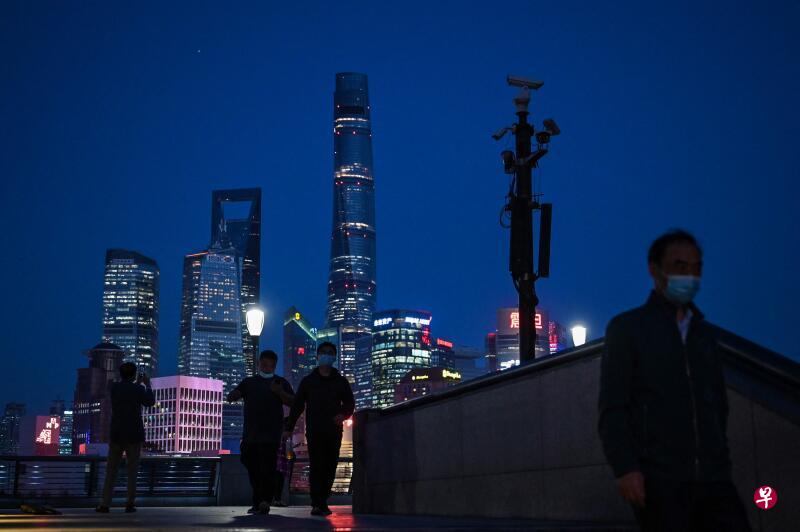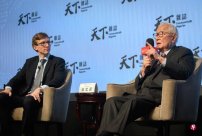
In some parts of China, people have continued to emerge from the public protests, opposing the measures of severe epidemics, and exacerbating market concerns.Mainland China and the Hong Kong stock market fell on Monday (November 28), and the CSI 300 index fell the largest single -day decline since the end of October; the RMB in the shore also fell to the lowest level in nearly three weeks.
Analysts have different views on the market.
Some of the Chinese officially introduced epidemic prevention measures must be reached on the policy formulation and execution. Otherwise, the market may continue to fluctuate;End the pace of clearing zero.
Goldman Sachs: The probability of dynamic zero in the second quarter of next year is 60 %
The US Investment Corporation Goldman Sunday (27th) predicts that China will clear the dynamic clearance earlier than previously predicted.The bank's report believes that China is most likely to end the dynamic clearance in the second quarter of next year, with a probability of about 60 %.
The Shanghai and Shenzhen 300 Index was affected by the disadvantaged news. It fell 2.7 % on Monday and closed down 1.1 % later, the largest single -day decline since October 28; the Hong Kong Hang Seng Index fell 1.6 %.
The RMB was also impacted on the same day. It fell 1.1 % at the shore of the RMB to the US dollar to 7.2435 yuan, the lowest level since November 10; the offshore RMB once fell 0.9 %.
The People's Bank of China only announced the second time of the year last Friday (25th), reducing the bank's deposit reserve ratio of 25 basis points to support economic development.Banks can provide more loans to companies disturbed by epidemic.
But when the market is pervasive, this measure has not played a effect of boosting investor confidence.
Wu Zhuoyin, a senior economist of French Foreign Trade Bank, analyzed that the market does not like uncertainty. "China's protests obviously belong to this category, which means that investors will become more inclined to avoid risks."
Xie Dongming, director of the research director of the Greater China of Singapore Overseas Chinese Bank, expects that market fluctuations may last for a while until investors are convinced that the implementation of Chinese epidemic prevention policies does not constitute contradiction with policy -oriented.
The number of new local crown diseases in mainland China broke 40,000 for the first time on Sunday, the highest number of single -day cases in the three years of outbreak.
The official announcement on the same day showed that the overall profit of Chinese industrial enterprises in the first 10 months of this year decreased by 3.0 %, and the decline was 0.7 percentage points from the first nine months, which was obviously dragged down by the epidemic and housing market crisis.
Japanese economist: protest or accelerate the pace of coexistence of China and crown diseases
Zhang Jiantai, a foreign exchange strategist in Asian Asia in Hong Kong, evaluated that the clearing policy seems to be coming to the critical point. Social turmoil reflects the common anti -epidemic fatigue after long -term blockade. Officials must relax or optimize epidemic prevention measuresno in good mood.He believes: "The Chinese economy is in the direction of reopening, but the road of reopening may be rugged."
International Consulting Company Teneo Analyst Wirdo evaluated that from the mid -term perspective, if the protests promoted China to accelerate the pace of clearing zero, in the end, it may have a positive impact on the market.
Su Berlaiman, the chief economist in Japan, the former Japanese economist in Asia, also believes that protests may be a catalyst that promotes positive results.Essence
Goldman Sachs Economist Shanhui issued a report on Sunday night, predicting that China is most likely to end the dynamic clearing in the second quarter next year, with a probability of about 60 %; the possibility of economic reopening before the second quarter is 30 %.
Chen Bo, dean of Wuhan Optics Valley Free Trade Research Institute, said in an interview with Lianhe Morning Post that Omikon's current spread is too fast, which has led to more frequent activation of epidemic control measures from all over China. "Now the policy itself wants to want toRelax, but the policy effect is tightening, and the implementation of policies in various places is not the same. "As a result, the current market expects fluctuations.
Chen Bo expects that China will not give up dynamic clearance for the time being, but the epidemic prevention policy may still be adjusted to reduce economic costs.


